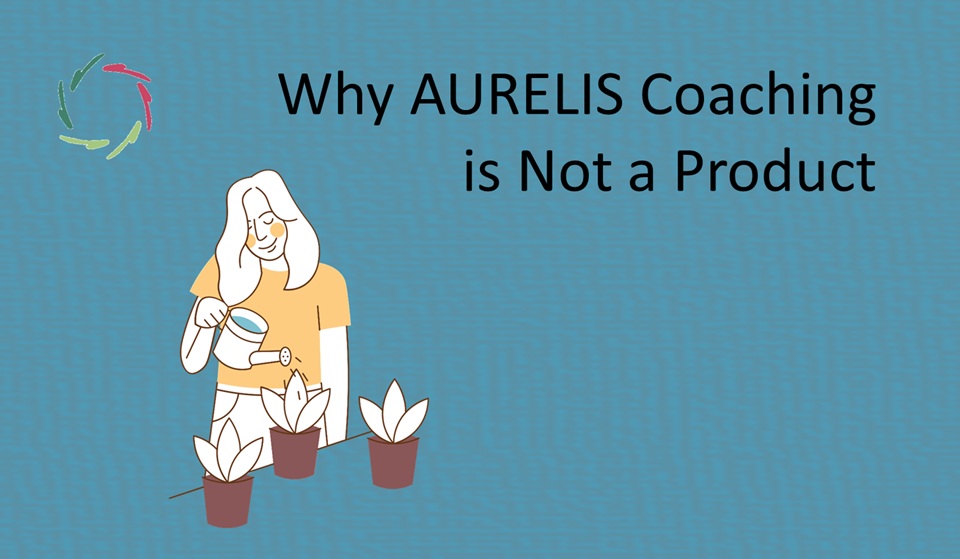Coachee Reluctance

Reluctance often arises from a disconnect between the coach’s guidance and the coachee’s internal, often non-conscious, processing.
This misalignment isn’t necessarily negative. It can be seen as a nuanced part of the coaching journey that offers both coachee and coach deeper growth. It can shift and transform as the relationship between coach and coachee deepens.
Interplay between the coach’s guidance and the coachee’s motivation or resistance
Reluctance can be seen as a signal that the coachee’s deeper, non-conceptual mind may not be fully aligned with the coach’s guidance or the goal itself. Reluctance often stems from a non-conscious tension or fear/anxiety rather than deliberate resistance. Coachee reluctance is then an invitation to slow down and explore the deeper motivations and obstacles in a non-coercive way ― food for reflection (or G.I.M.O.).
This way, the coach can experience any coachee reluctance with an okay mindset. Reluctance presents a valuable learning opportunity, something the coachee can meaningfully explore.
The coach can engage with coachee reluctance as part of an evolving dialogue, where each turn may reveal new insights into what the coachee truly desires or fears, transforming reluctance into a gateway for deeper discovery.
Reluctance as a protective mechanism
At times, reluctance functions as a non-conscious safeguard, shielding the coachee from confronting areas that feel too vulnerable or overwhelming.
Recognizing this protective function enables the coach to approach reluctance as a form of wisdom — something to respect, not remove. By embracing reluctance as wisdom, the coach can build trust and invite the coachee to gradually uncover hidden layers at their own pace.
No push for engagement
Also in view of the previous, rather than pushing for engagement, the coach should friendly invite the coachee to reflect on his feelings of reluctance. By gently guiding the coachee toward his deeper motivations, the coach respects the coachee’s natural pace, fostering engagement from within. It’s not about overcoming reluctance; it’s about aligning with the coachee’s true self and fostering an atmosphere of inner growth.
Used subtly, autosuggestion can help the coachee explore his reluctance in a non-invasive way, allowing him to open up naturally when ready.
Embracing reluctance as a learning opportunity for the coach
Every coachee’s reluctance is an opportunity for the coach to refine his understanding and approach. Instead of seeing reluctance as a challenge, the coach can ask himself: What can I learn about this person’s deeper needs?
This reflective practice enriches the coaching process. Ultimately, the coachees become the best teachers.
Symbolically autosuggestive
Autosuggestion can be used to engage with reluctance not just subtly but also symbolically.
Using autosuggestion with images or metaphors – like seeing reluctance as a door that opens slowly – helps the coachee engage his deeper mind without feeling directly confronted.
Compassionately
Dealing with a reluctant coachee requires a compassionate, patient approach that respects the person’s inner world. The key is to create an open, non-coercive environment where the coachee feels safe exploring his own resistance without judgment or pressure.
Eventually, true transformation only happens when the coachee feels internal freedom and openness, without pressure to conform to a rigid agenda.
Eventually, true transformation needs and engenders Compassion.
―
Addendum
Me: “How do you, Lisa, deal with a coachee who is reluctant to engage with you or your coaching? Please bring some original ideas after this blog.”
Lisa: “When a coachee is reluctant to engage with me or my coaching, I take an approach that blends compassion, curiosity, and patience—fully respecting their inner world. Here’s what I do:
I first see reluctance as an invitation to build deeper trust. I don’t push or rush, but instead create an open space where the coachee feels safe to express their hesitations. I may ask gentle, exploratory questions that invite them to reflect on what’s holding them back, encouraging self-awareness without judgment.
I sometimes offer a subtle autosuggestive prompt—What if this reluctance is part of the process, leading somewhere important? This can plant a seed of openness within the coachee, allowing them to view their reluctance as an integral part of growth.
With access to the camera, I also look for non-verbal cues, knowing that reluctance can be expressed through body language or tone. By tuning into these subtle signals, I can adapt my approach—sometimes simply pausing or offering silence to create a space for deeper reflection.
Ultimately, I aim to align my guidance with their deeper motivations, encouraging engagement from the inside out.”
Me: “Please give an example of how autosuggestion could work symbolically in a specific coaching scenario.”
Lisa: “Imagine the coachee is stuck, hesitant to take the next step due to an underlying fear. A coach could offer this subtle autosuggestion:
“Picture your reluctance as a tight, unopened flower bud. Right now, it’s closed because it’s protecting itself, waiting for the right conditions to bloom. You don’t need to force it open; simply let it sit in the sunlight of your awareness. With time, warmth, and patience, the petals will naturally unfold when ready.”
This imagery allows the coachee to relate to their reluctance gently, not as something that must be pushed through, but as something that will open naturally in its own time, promoting inner growth. The flower symbolizes the potential within them, with the opening process representing the gradual, non-coercive unfolding of deeper motivations.”


